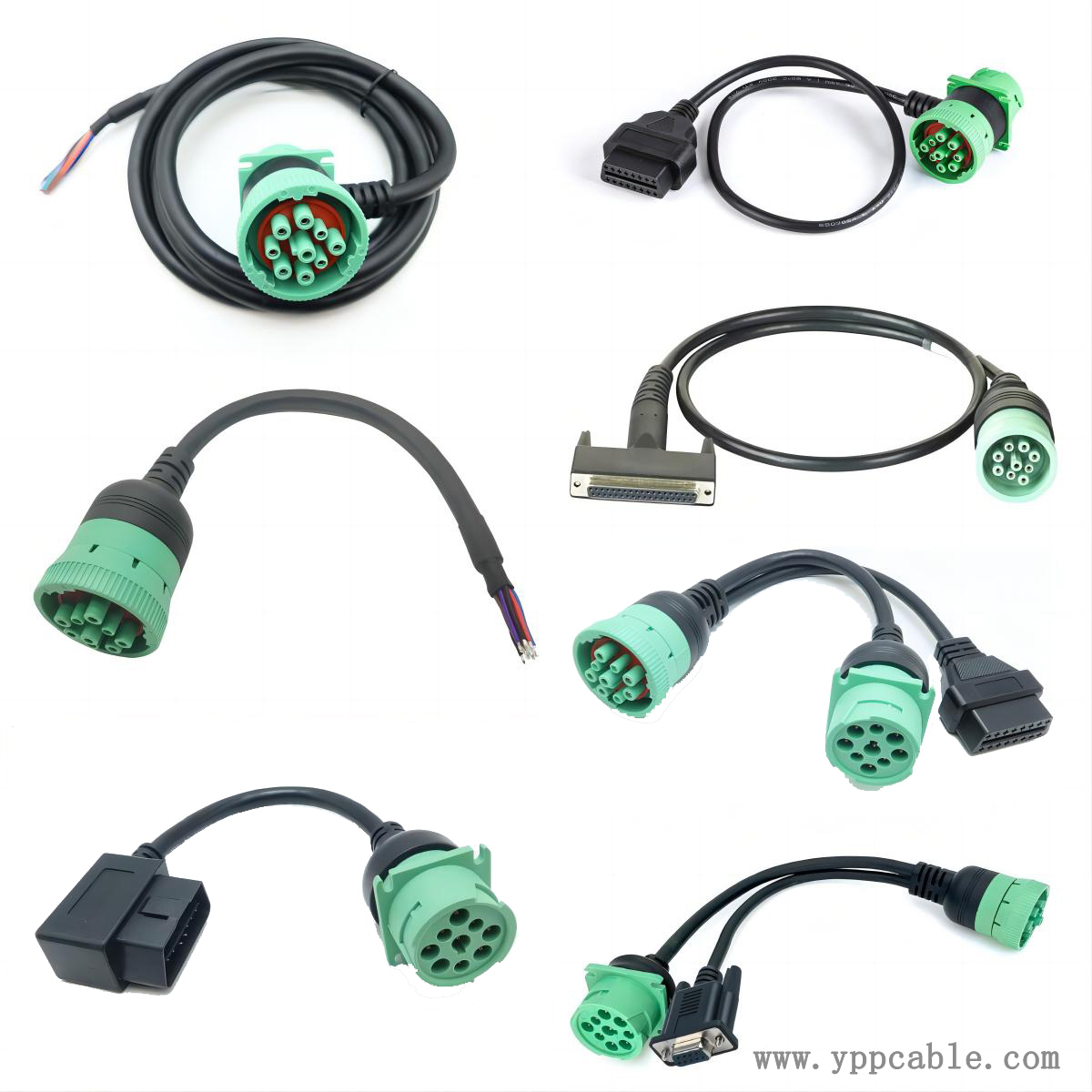How to test the compatibility of J1939 to OBD2 cable?
Testing the compatibility of J1939 to OBD2 cables can be approached from multiple aspects. Below is a detailed introduction to the specific testing methods:
preparation
Clarify vehicle information: Determine the J1939 protocol version used by the vehicle, the supported functions, and the specifications and standards of its OBD2 interface. At the same time, understand the electronic control unit (ECU) layout and communication requirements of the vehicle.
Prepare diagnostic equipment: Choose a professional diagnostic equipment that supports the OBD2 protocol, ensuring its complete functionality, stable performance, and detailed diagnostic functions and data display capabilities.
Check the appearance of the cable: Carefully inspect the cable for damage, breakage, bent pins, and other issues to ensure that the physical condition of the cable is good.

Physical connection testing
Connecting cables: Connect the J1939 end of the J1939 to OBD2 cable correctly to the vehicle's J1939 interface, and connect the OBD2 end to the diagnostic equipment. Ensure a secure connection without any looseness or poor contact.
Observe indicator lights: Some cables or diagnostic equipment are equipped with indicator lights, and observe the status of the indicator lights after connection. If the indicator light is on normally, it indicates that the physical connection between the cable and the equipment is basically normal; If the indicator light does not light up or flashes abnormally, there may be a connection problem.
Communication function test
Establish communication: Turn on the diagnostic device and attempt to establish a communication connection with the vehicle. If the connection can be successfully established, it indicates that the cable has compatibility at the basic communication level. If a connection cannot be established, it is necessary to check whether the connection is correct, whether the vehicle and equipment are turned on, and whether the cables are damaged.
Read vehicle information: After successful connection, use diagnostic equipment to read the basic information of the vehicle, such as vehicle identification number (VIN), engine model, ECU version, etc. If these information can be accurately read, it indicates that the cable can achieve basic data transmission functions.
Data accuracy testing
Read real-time data: Use diagnostic equipment to read real-time data of the vehicle, such as engine speed, vehicle speed, coolant temperature, intake pressure, etc. Compare the read data with the actual operating status of the vehicle to check the accuracy and rationality of the data. If there is a significant deviation or abnormal fluctuation in the data, it may be due to issues with the cable during data conversion or transmission.
Fault code reading and clearing: Read the fault code of the vehicle, record the fault code information, and attempt to clear the fault code. Read the fault code again and check if it can be successfully cleared. If the fault code reading and clearing operations can be carried out normally, it indicates that the cable has compatibility in the transmission and processing of fault diagnosis data.
Multi condition testing
Different operating state testing: Testing is conducted under different operating states of the vehicle, such as starting, idling, driving, accelerating, decelerating, etc. Observe whether the diagnostic equipment can stably read data and perform diagnostic operations under various working conditions, ensuring that the cable can work normally under different working conditions.
Long term testing: Conduct long-term testing, running continuously for hours or even days, to observe whether the cable will experience communication interruptions, data loss, and other problems during long-term use, in order to test its stability and reliability.
Compatibility Expansion Testing
Testing with different diagnostic devices: Use OBD2 diagnostic devices of different brands and models for testing to check if the cable is compatible with multiple diagnostic devices. This helps ensure that the cable can be used normally in different maintenance and diagnostic environments.
Different vehicle testing: If conditions permit, conduct testing on multiple vehicles of different brands and models to verify the compatibility of cables with different vehicles. The implementation of J1939 protocol may vary among different vehicles, and multi vehicle testing can provide a more comprehensive evaluation of cable compatibility.
Contact: Kevin Yu
Phone:
E-mail: yppcable@126.com
Whatsapp:
Add: FL2,Bld 6, Hongte Industrial Park, Yongtou , Changan, Dongguan, Guangdong